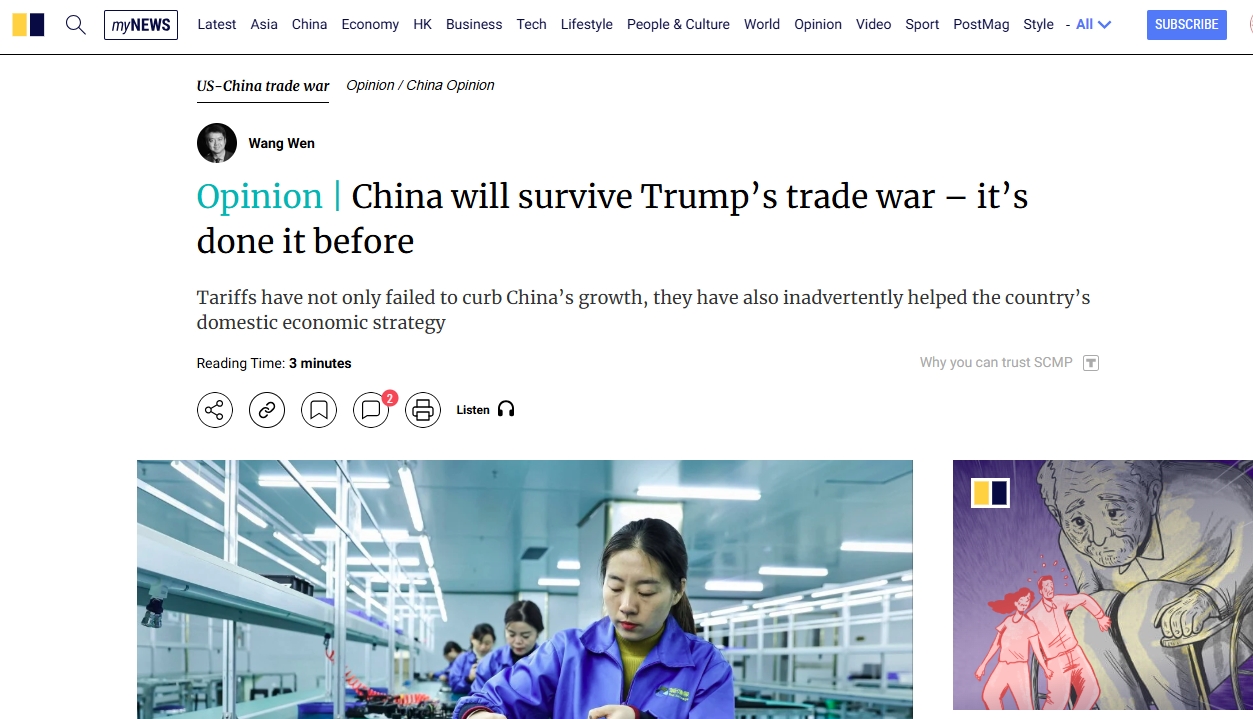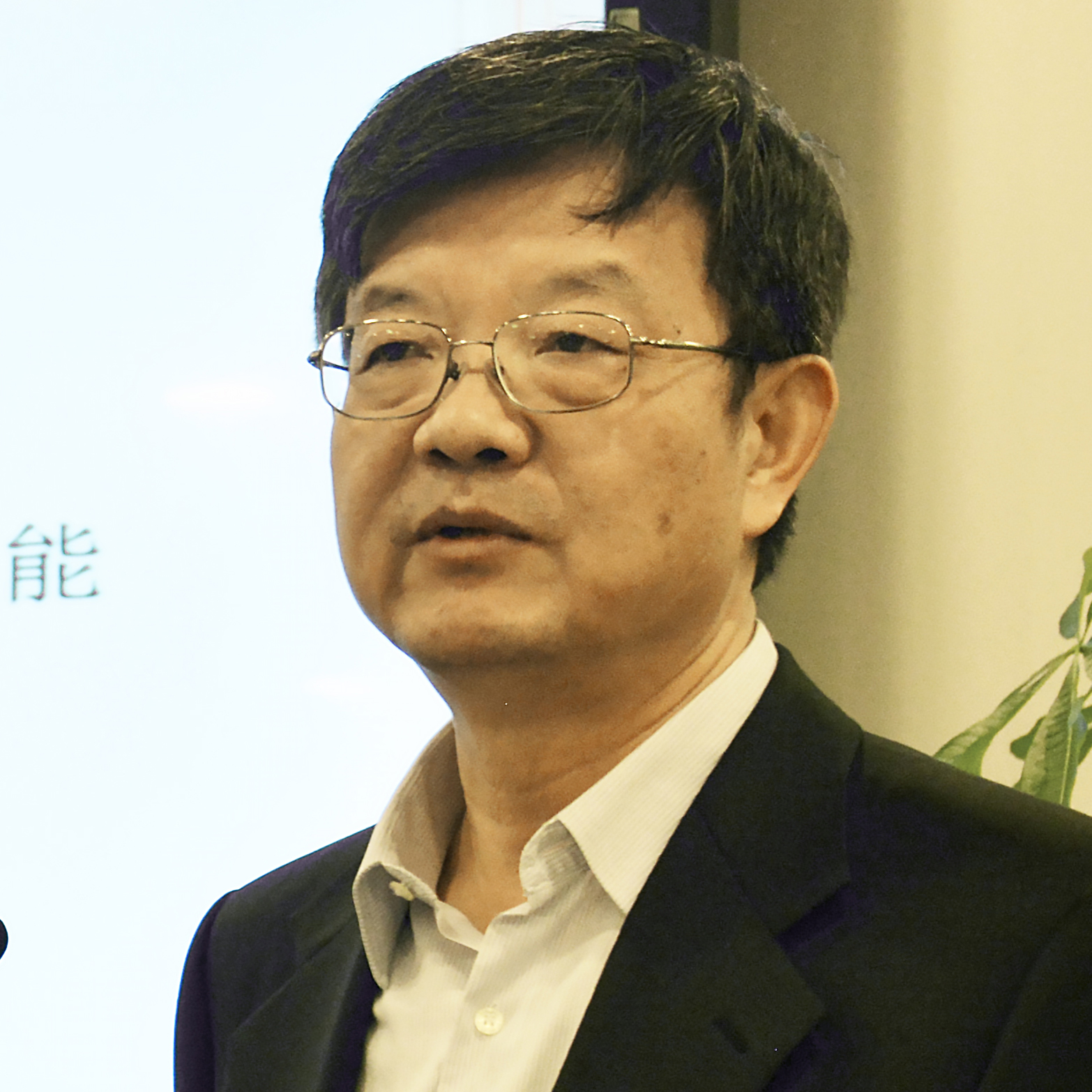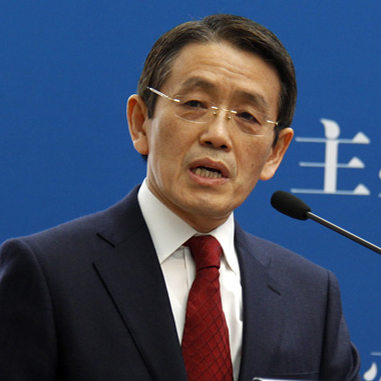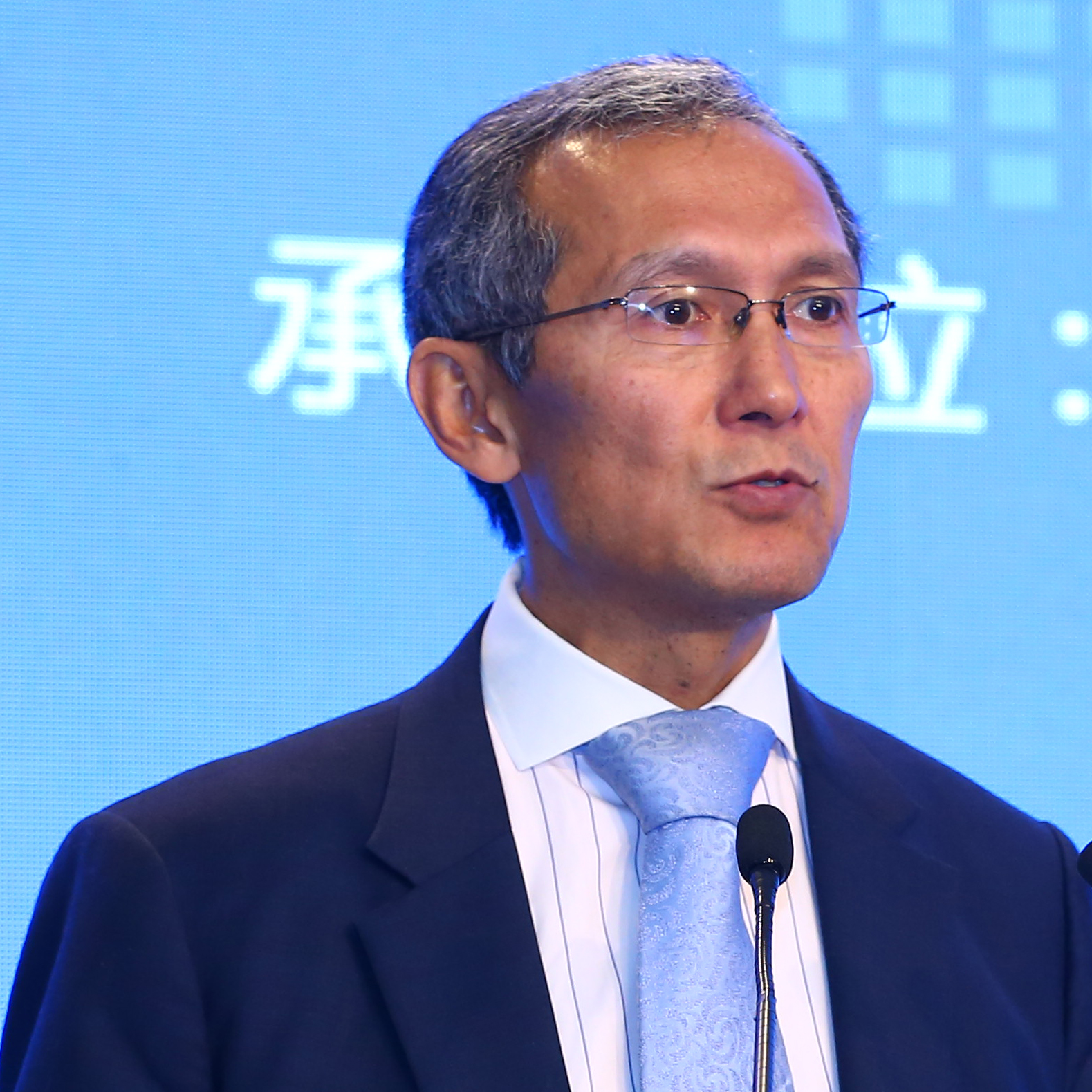Commentaries
Your Present Location: Teacher_Home> Wang Wen> CommentariesWang Wen: China will survive Trump’s trade war – it’s done it before
Source: South China Morning Post Published: 2025-02-16

By Wang Wen
Just days after US President Donald Trump announced a 25 per cent tariff on Canadian and Mexican goods and a 10 per cent tariff on Chinese goods, Canada and Mexico reached a deal appeasing the US in exchange for a one-month suspension of the tariffs.
China responded with multiple countermeasures: a 15 per cent tariff on US coal and liquefied natural gas and a 10 per cent tariff on crude oil, agricultural machinery and pickup trucks. Beijing also implemented export controls on rare earth elements such as tungsten and tellurium. China included PVH Group and Illumina on its “unreliable entity list”. Lastly, Beijing launched an antitrust investigation into Google.
China did not back down. Instead, Beijing introduced tougher, more precise and diversified countermeasures. The fundamental reason is that after nearly eight years of trade conflict, China has grown more confident, strategic and resilient.
After Trump launched the trade war in 2018, Chinese exports to the US have faced tariffs of around 19 per cent. By now, the Chinese public is accustomed to trade disputes and an extra 10 per cent tariff hardly comes as a shock.
Looking at the long-term impact, the objectives Trump set out to achieve in 2018 have largely gone unmet.
According to the US Bureau of Industry and Security, US-China trade was worth around US$659.8 billion in 2018, and the US trade deficit was US$419.2 billion. Based on Office of the US Trade Representative figures, bilateral trade was estimated at US$582.4 billion in 2024, with Washington still recording a trade deficit in goods with Beijing, at US$295.4 billion.
By 2023, though China remains the world’s top exporter, its overall market share in the US had dropped by 7.7 percentage points, according to the International Netherlands Group, underscoring the decreasing importance of the US market to China.
Not only have tariffs failed to curb China’s growth, but they have inadvertently helped the country’s domestic economic strategy, particularly with regard to manufacturing and technological development. US tech restrictions have sped up China’s push for technological self-sufficiency.
By 2024, China’s share of domestically produced chips reportedly reached 30 per cent, well above the 2018 level. Huawei has become largely self-sufficient in chip production. The company’s revenue has rebounded, surpassing its 2018 record. Meanwhile, new Chinese tech giants such as DeepSeek have emerged.
The first Trump administration failed to defeat China, and after nearly eight years, the country has only grown stronger. The second Trump administration looks even less likely to succeed. While Trump’s tariff threats may intimidate Canada, Mexico or Europe, they hold little sway over China, which has nearly a decade of experience countering such policies.
China’s confidence stems from its formidable manufacturing sector, which has been the world’s largest for 15 consecutive years. In 2024, China reportedly accounted for 31.6 per cent of global manufacturing output, roughly double that of the US (15.9 per cent) and about five times that of Japan (6.5 per cent). Chinese manufacturers dominate multiple major industries, including but not limited to steel, cement, textiles, consumer electronics, household appliances, 5G base stations, consumer drones and clean energy.
China’s exports to the US include electrical machinery, furniture, toys, plastics and textiles. These are highly competitive industries that are integral to the daily lives of American consumers.
In mid-2020, Canalys estimated that around 70 per cent of smartphones in the US were made in China, while in recent reports the industry group Toy Association estimated that nearly 80 per cent of toys of American shelves were made in China. Tariffs on these goods will ultimately raise prices for American consumers as the costs are passed down the supply chain.
Of greater concern is the composition of US exports in 2024. The country has increasingly shifted towards resource exports. Refined petroleum, crude oil and natural gas are among the US’ top exports.
While both countries export integrated circuits, China exported significantly more in 2022, according to the Observatory of Economic Complexity. Meanwhile, China’s top exports include broadcasting equipment, office machine parts and computers.
Data from the US International Trade Commission shows the value increase in Chinese electric vehicle (EV) exports shot up 124-fold from US$295 million in 2018 to US$36.7 billion in 2023. The same year, the value of US EV exports was still below US$10 billion. It seems that the US, which sells natural resources for more than 15 per cent of its exports, according to Trading Economics, isn’t so competitive.
Trump’s tariffs have been presented as a part of a strategy to revive US manufacturing. In reality, they have weakened it while also driving up consumer prices and failing to achieve their goals. The president is talented at positioning himself as tough on China for electoral gain, but this is little more than political posturing.
Rather than addressing the causes of US manufacturing decline, Trump uses tariffs as a political tool, scapegoating foreign competitors while ultimately harming US consumers and businesses. If countries such as Canada, Mexico, China and the European Union retaliate with tariffs on US goods, America’s resource exports will suffer, inflation will rise and the economy could face severe consequences.
His tariff strategy reflects a shift in the US from a global leader to a regional power embroiled in trade conflicts and economic instability. From this perspective, Trump’s policies are not making America great again. They are accelerating its decline.
Key Words: Wang Wen, RDCY, China, Trump























































































 京公网安备 11010802037854号
京公网安备 11010802037854号





